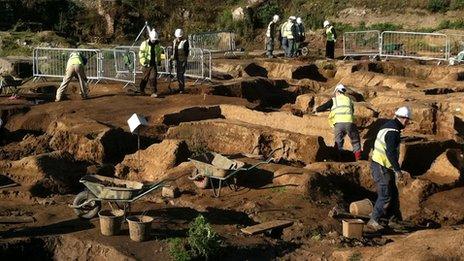Viking skeleton goes on display in York
- Published
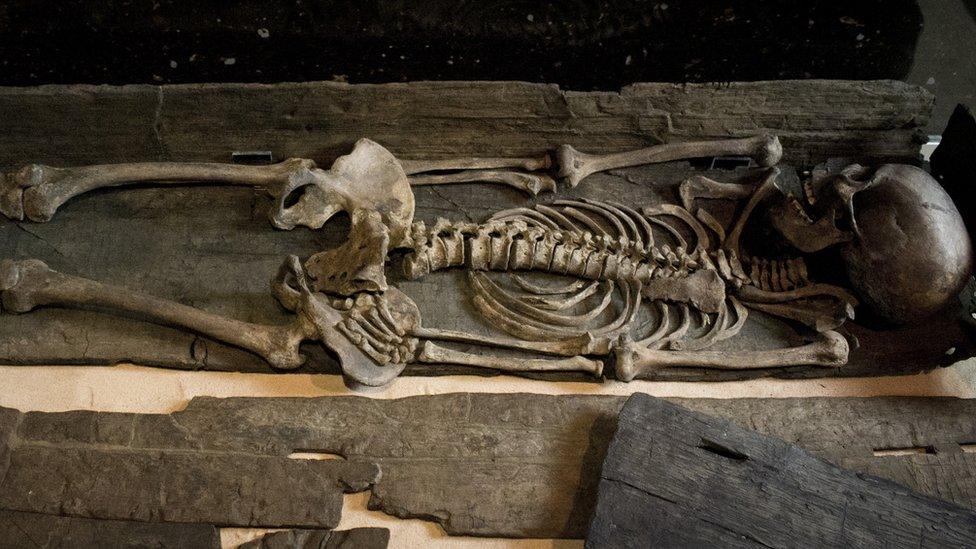
The skeleton was uncovered in the Swinegate area of York in 1990
The skeleton of a young Viking woman found in an intact timber coffin has gone on display for the first time.
The skeleton was unearthed during a large-scale excavation of the Swinegate area of York in 1990.
The York Archaeological Trust (YAT) said more than 100 burial sites were discovered, many dating from between the 9th and 11th Century.
The skeleton and coffin are being displayed at the city's Jorvik Viking Centre.
York was occupied by the Vikings from the late 9th Century until the middle of the 10th Century, when it was absorbed into the Anglo-Saxon Kingdom of England.
The Swinegate dig explored the churchyard of the former church of St Benet, which had stood on the site from the 8th to the early 14th Century.
Unusually, a number of timber coffins had survived.
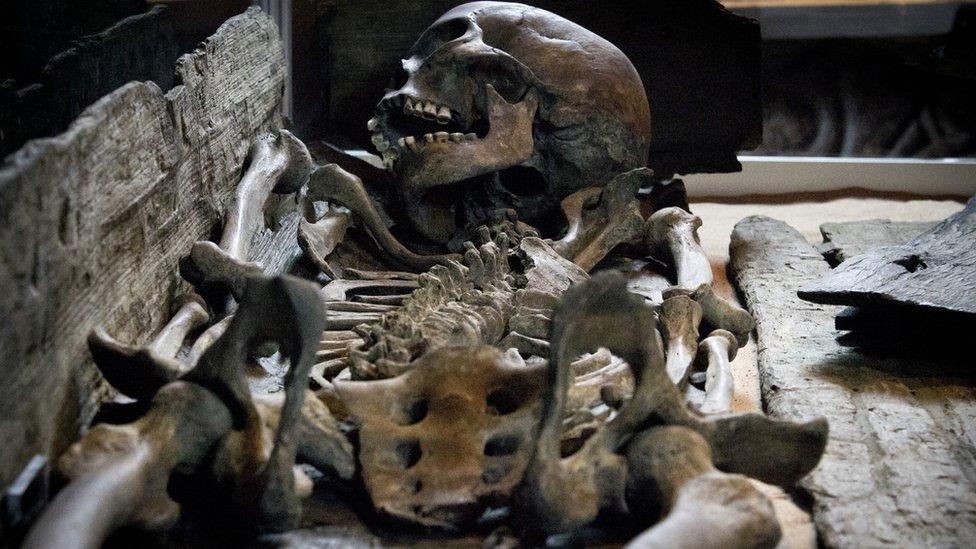
The discovery was unusual as wooden coffins rarely survive, according to archaeologists
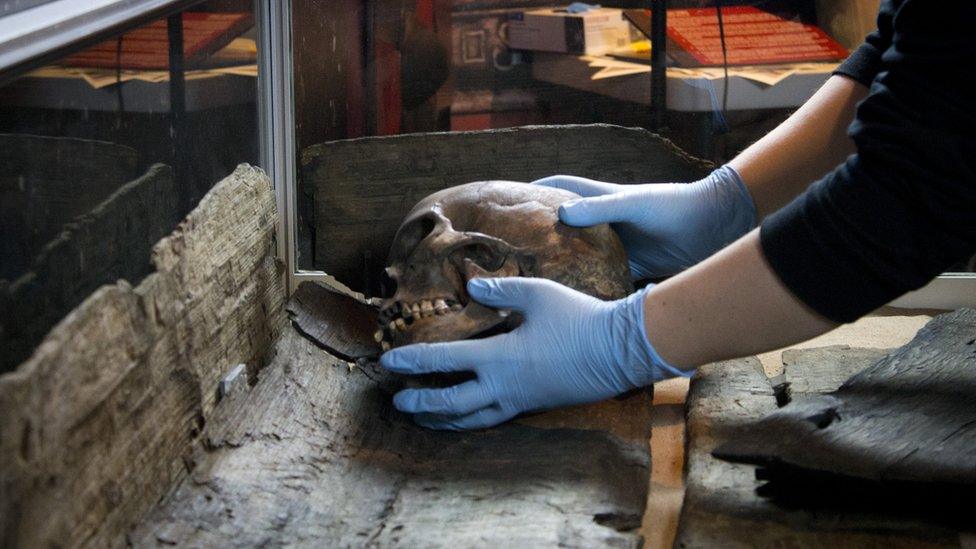
The woman is believed to have been aged between 26 and 35 at the time of her death
Sarah Maltby, director of attractions for the trust, said: "As we found in the Coppergate dig of the late 1970s, York's waterlogged soil conditions preserved the timber of several coffins, including this one, so what our archaeologists unearthed represents a series of previously undisturbed burials with complete skeletons, some of which date back more than 1,000 years."
She said the condition of the wood gave the coffin a national significance, as so few similar examples exist.
The coffin was made for a young woman, estimated at being between 26 and 35 at her death, and dates from the late Viking period.
The YAT said recent analysis of the bones revealed the woman had inadequate nutrition or disease as a child and a degenerative joint disease in the spine and hips.
There was no indication of what caused her death.
- Published27 August 2015
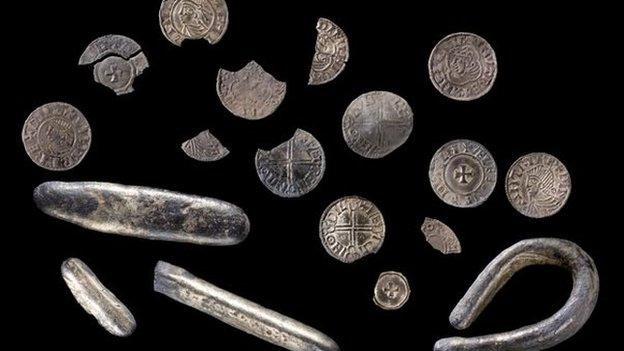
- Published13 December 2014
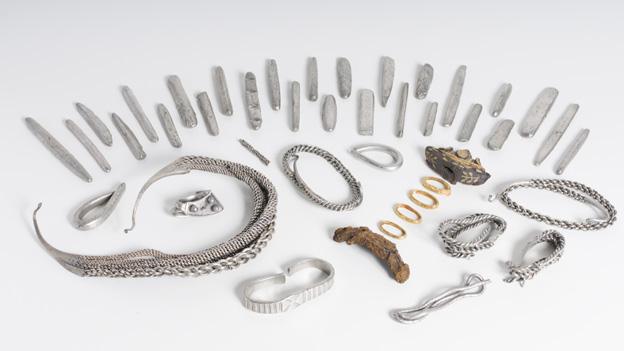
- Published22 October 2014

- Published21 October 2011
